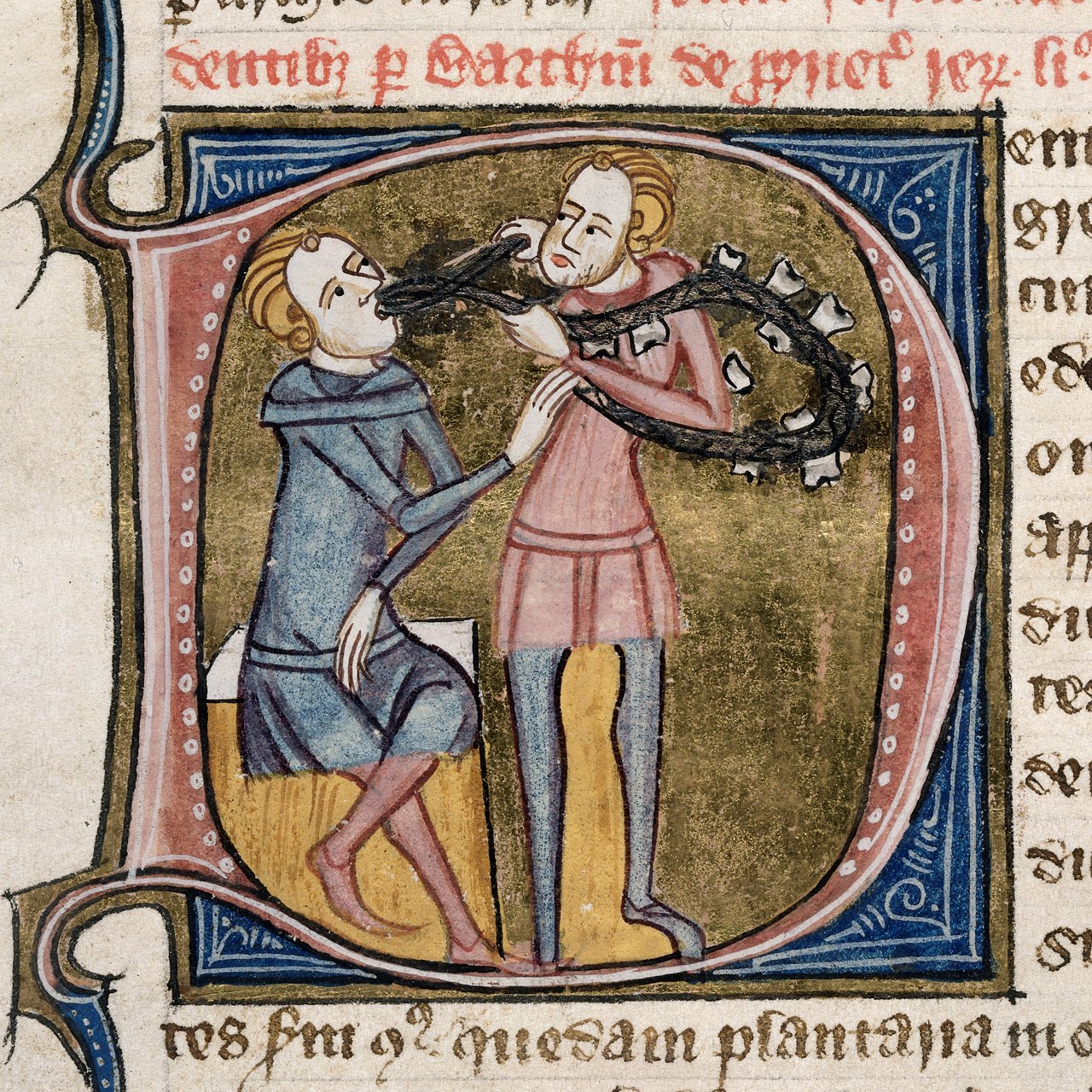It’s National Toothache Day today and so we asked Laura, who is with us on a student placement, to research medieval dentistry…
Going to the dentist in the 21st century is unpleasant, so imagine having to go in medieval times. If you were unlucky enough to experience an affliction like toothache, you’d have to pay a visit to a barber surgeon, the ‘jack of all trades’ of the Middle Ages.
These medical practitioners were able to perform a whole range of procedures, such as bloodletting, amputations and teeth-pulling. Having a tooth removed by a barber surgeon would be done with a pair of pliers and no anaesthetic, so it’s easy to understand why extraction was a last resort.
Alternatively, if there was no surgeon to hand, you could see a travelling practitioner or even a black smith to remove the dodgy tooth!
Depictions of medieval times in TV and film often portray the period as dirty and unhygienic. Surprisingly, analysis of skeletons from the middle ages suggest that people actually had quite healthy teeth! They used rough linen cloths to clean their teeth, often accompanied with a variety of pastes and powders used to whiten teeth and preserve fresh breath. The ingredients in these were far from the fluoride we know today. Herbs such as sage, rosemary, pepper and cinnamon were commonplace, as well as mint and salt. Even a form of mouth wash existed, with medieval people using vinegar-based mixtures to freshen their breath.
So, if dental hygiene was adequate during the medieval period, why did it get so bad later on? The answer is simple: sugar. How many times has the dentist told you off for eating too many sweets? Funnily enough, our ancestors experienced the same problem. Sugar rarely existed before the late 1400s, but it became a staple of the wealthy during the Tudor era. Queen Elizabeth I was famous for her black teeth and severe toothache, but was so scared to undergo an extraction that one of her bishops had a tooth removed to prove that it was okay!
Aside from extraction, there was a range of procedures that could be used to treat afflictions of the teeth and gums. Surgeons were able to treat mouth cancer by using sharp tools to remove the cancerous tissue and then sealing the wound by cauterisation, which involved using piping hot instruments to close the incision. Forms of dentures also existed for the rich and were often made out of animal or human bone.
So, next time you go to the dentist terrified at the prospect of having a filling or a tooth removed, just think about how unlucky you’d have been if you were in the same position 600 years ago.
